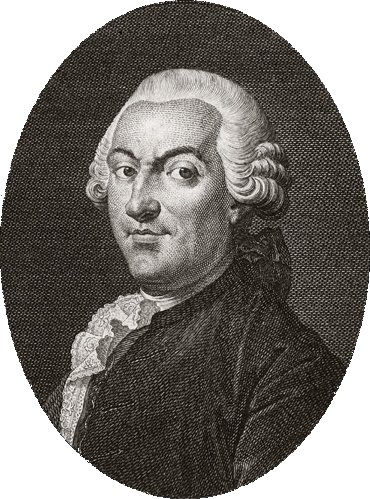<Back to Index>
- Historian Jean François Marmontel, 1723
- Painter Charles Antoine Coypel, 1694
- 21st Prime Minister of Australia Edward Gough Whitlam, 1916
PAGE SPONSOR

Jean-François Marmontel (July 11, 1723 – December 31, 1799) was a French historian and writer, a member of the Encyclopediste movement.
He was born of poor parents at Bort-les-Orgues, in Corrèze. After studying with the Jesuits at Mauriac, Cantal, he taught in their colleges at Clermont and Toulouse; and in 1745, acting on the advice of Voltaire, he set out for Paris to try for literary success.
From 1748 to 1753 he wrote a succession of tragedies (Denys le Tyran (1748); Aristomene (1749); Cleopâtre (1750); Heraclides (1752); Egyptus (1753)), which, though only moderately successful on the stage, secured Marmontel's introduction into literary and fashionable circles.
He wrote a series of articles for the Encyclopédie evincing considerable critical power and insight, which in their collected form, under the title Eléments de Littérature, still rank among the French classics. He also wrote several comic operas, the two best of which probably are Sylvain (1770) and Zémire et Azore (1771). In the Gluck – Piccinni controversy he was an eager partisan of Piccinni with whom he collaborated in Didon (1783) and Penelope (1785).
In 1758 he gained the patronage of Madame de Pompadour, who obtained for him a place as a civil servant, and the management of the official journal Le Mercure, in which he had already begun the famous series of Contes moraux. The merit of these tales lies partly in the delicate finish of the style, but mainly in the graphic and charming pictures of French society under King Louis XV. The author was elected to the Académie française in 1763. In 1767 he published Bélisaire, now remarkable in part because of a chapter on religious toleration which incurred the censure of the Sorbonne and the archbishop of Paris. Marmontel retorted in Les Incas (1777) by tracing the cruelties in Spanish America to the religious fanaticism of the invaders.
He was appointed historiographer of France (1771), secretary to the Academy (1783), and professor of history in the Lycée (1786). As a historiographer, Marmontel wrote a history of the regency (1788). Reduced to poverty by the French Revolution, Marmontel retired during the Reign of Terror to Evreux, and soon afterwards to a cottage at Abloville in the département of Eure. There he wrote Memoires d'un pere (4 vols., 1804), including a picturesque review of his life, a literary history of two important reigns, a great gallery of portraits extending from the venerable Jean Baptiste Massillon, whom more than half a century previously he had seen at Clermont, to Honoré Mirabeau. The book was nominally written for the instruction of his children. It contains an exquisite picture of his own childhood in the Limousin; its value for the literary historian is great.
Marmontel lived for some time under the roof of Mme Geoffrin, and was present at her famous dinners given to artists; he was welcomed into most of the houses where the encyclopaedists met. He thus had at his command the best material for his portraits, and made good use of his opportunities. After a short stay in Paris when elected in 1797 to the Conseil des Anciens, he died at Abloville.
He was a member of the Masonic lodge Les Neuf Sœurs.
John Ruskin named him as one of the three people in history who were the most influential for him.